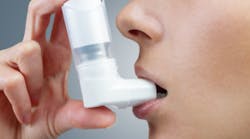Myth busters for dental assistants: Cold sterile–glutaraldehyde
Here I explore that crazy chemical referred to as “cold sterile,” in other words, glutaraldehyde. It’s been used for years in dentistry and in recent years has been the subject of much concern.
Before we talk about advantages and disadvantages, let’s discuss the definitions of sterilant, disinfectant, and high-level disinfectants.
Sterilant: Physical or chemical agent or process that completely eliminates all forms of life, particularly microorganisms. This is needed for the really bad guys that cause diseases.
Disinfectant: An agent that destroys pathogens by physical or chemical means. Disinfection processes do not ensure the same levels associated with sterilization processes and can vary in how many microorganisms they kill. The stronger pathogenic microorganisms usually need sterilization.
High-level disinfection: This is a process using a sterilant under less-than-sterilizing conditions. The process kills all forms of microbial life except for large numbers of bacterial spores.
Glutaraldehyde has been the go-to sterilant for years. It is classified as a high-level disinfectant. When used properly, it works just like the manufacturer says it does. Its properties as a chemical sterilant were initially recognized in the early 1960s as the industry looked for a safer alternative to formaldehyde. (Yes, I said formaldehyde!) In the years since its introduction as a disinfectant/sterilant, glutaraldehyde has been linked with a variety of adverse health effects including asthma, breathing difficulties, respiratory irritation, and skin rashes.
In some cases these issues can present immediately. In most cases, the long-term exposure creates a delay in reactions and causes concerns for oral health-care workers. The most serious adverse health reaction documented among oral health-care workers exposed to glutaraldehyde vapor is asthma, a chronic condition characterized by bronchial hyper-responsiveness.
Exposure to glutaraldehyde usually occurs during the following activities:
• Activating and pouring it into or out of the reservoir or container used to hold the solution
• Opening the container to immerse instruments
• Agitating the glutaraldehyde when removing or returning the basket
• Rinsing the instruments containing residual glutaraldehyde
• Handling the instruments that have just come out of the solution
• Disposing of used glutaraldehyde solutions to the water system
What should be done to minimize exposure?
Always wear your personal protective equipment (PPE), such as gloves, mask, and safety eyewear, and isolation gowns, lab coats, or aprons when working in the sterilization area. Think of these as standard precautions. Everything in that room should be considered harmful. Treat glutaraldehyde like everything else—with caution! Make sure you have proper ventilation and always follow the manufacturer’s instructions for use.
Why do we use it?
Glutaraldehyde has long been used to disinfect medical equipment that cannot be subjected to sterilization due to intense heat. However, there are now alternatives, and not just in chemicals used. Due to increased awareness, we now have the ability to autoclave more items than ever before.
According to the Centers for Disease Control and Prevention, dental instruments are classified into three categories according on the risk of transmitting infection. The classifications of critical, semi-critical, and noncritical are based on the following criteria:
1. Critical instruments are those used to penetrate soft tissue or bone, or enter into or contact the bloodstream or other normally sterile tissue. They should be sterilized after each use. Sterilization is achieved by steam under pressure (autoclaving), dry heat, or heat/chemical vapor. Critical instruments include forceps, scalpels, bone chisels, scalers, and surgical burs.
2. Semicritical instruments are those that do not penetrate soft tissues or bone but contact mucous membranes or non-intact skin. These include mirrors, reusable impression trays, and amalgam condensers. These devices should be sterilized after each use.
3. Noncritical instruments are those that come into contact only with intact skin. These include the external components of x-ray heads, blood pressure cuffs, and pulse oximeters. Such devices have a relatively low risk of transmitting infection. Therefore, they may be reprocessed between patients by intermediate-level or low-level disinfection.
I’ve found that many offices are using a cold sterile solution for many things that are either disposable or that they can autoclave, and they don’t realize it! Pay attention to what you put in your cold sterile. Are you positive something belongs there? Into which of the three categories above does it fall? Can you use a barrier on an object to protect it rather than use cold sterile? Also, single-use items should never, ever be reused!
Four years ago our office went cold sterile-free. We either autoclave or throw away items. The solution we use is expensive, takes up room on the counter, and is considered a hazardous material by the Environment Protection Agency (EPA). In some cities and counties you must call a waste management system to find out how to properly dispose of something. The answers will differ, but the office may need to have it collected and removed. Of course, this comes at a cost to the practice.
This is just one of the chemicals referred to as cold sterile. There are several others on the market today. Seriously examine what you use it for. Are there alternatives? Learn all you can about the solution you use and why you use it. You may surprise yourself and save yourself some health issues!
You might also want to read:
Myth busters: Know the laws for dental assisting in your state
Dental office infection control myth busters: handpieces
